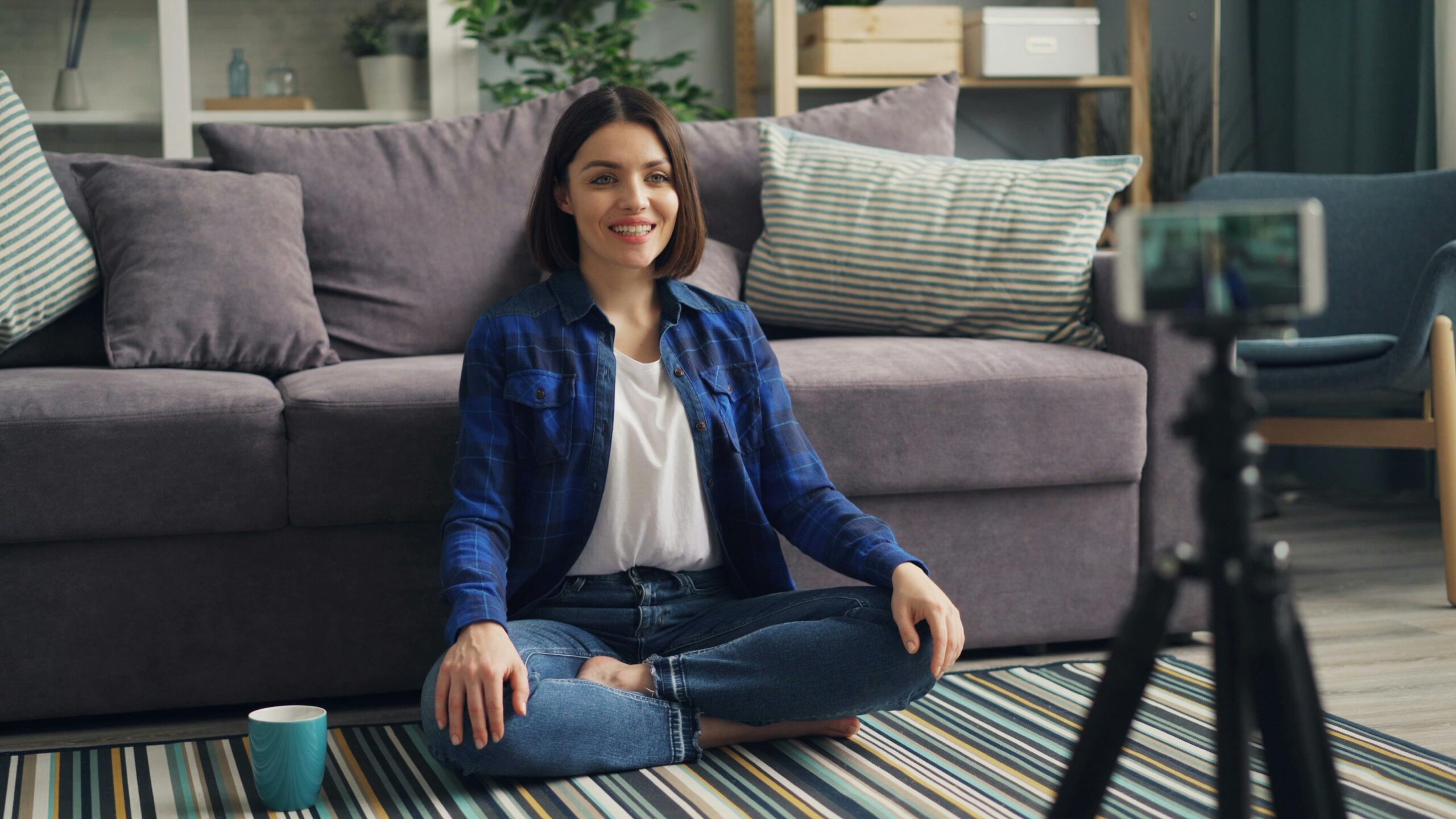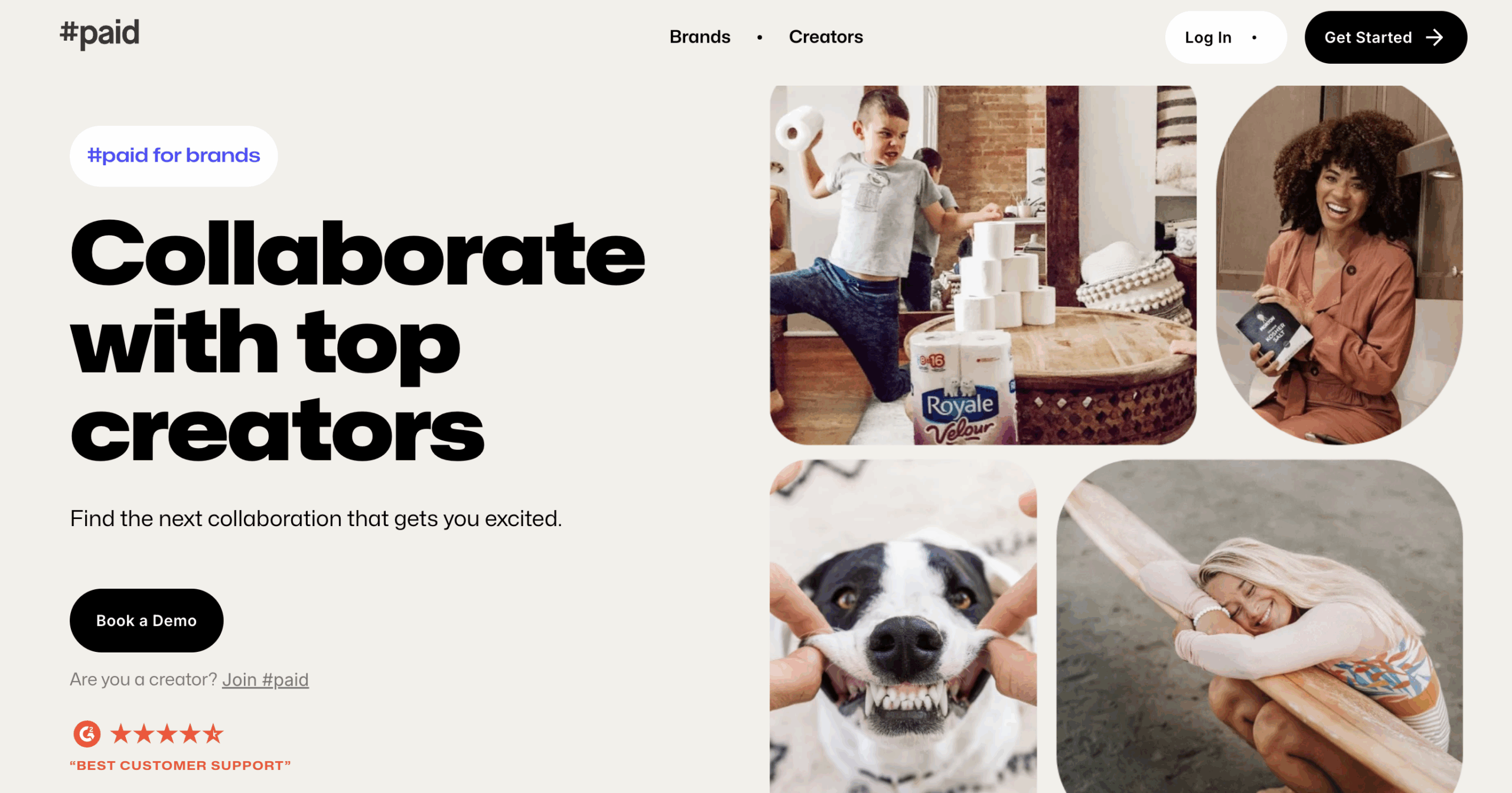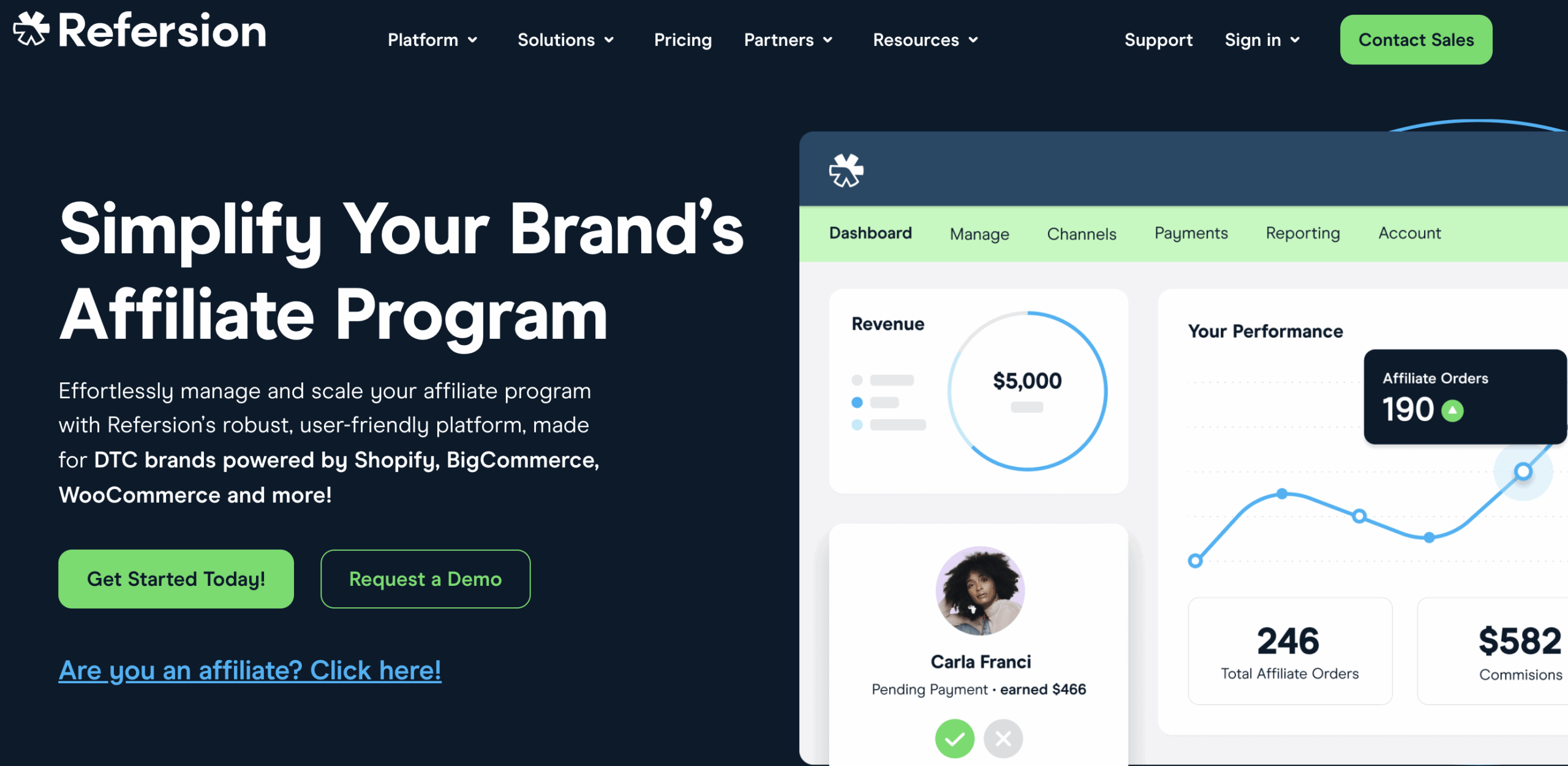
Mega, macro, micro, or nano Influencers are different influencer types, varied by cooperation style, impact, and conversion. Their difference goes beyond just fan base size, each presenting unique strengths.
Despite mega & macro influencers’ appeal for reach, a surprising 69% of brands opted for nano & micro partners in 2023 (IMH Report), valuing intimacy over scale for impactful engagement.
Diving into each influencer type’s subtleties, fan base, fees, and finesse, we’ll guide you on the difference between micro, macro, and mega influencers, the way of choosing from and collaborating with them effectively.
Mega Influencer 101: Essential Tips on Partnership Success
What is a Mega Influencer?
Mega influencers typically have more than 1 million followers. Their widespread reach enables them to significantly influence consumer behavior and popular culture. However, this also makes them more expensive than most macro and micro influencers.
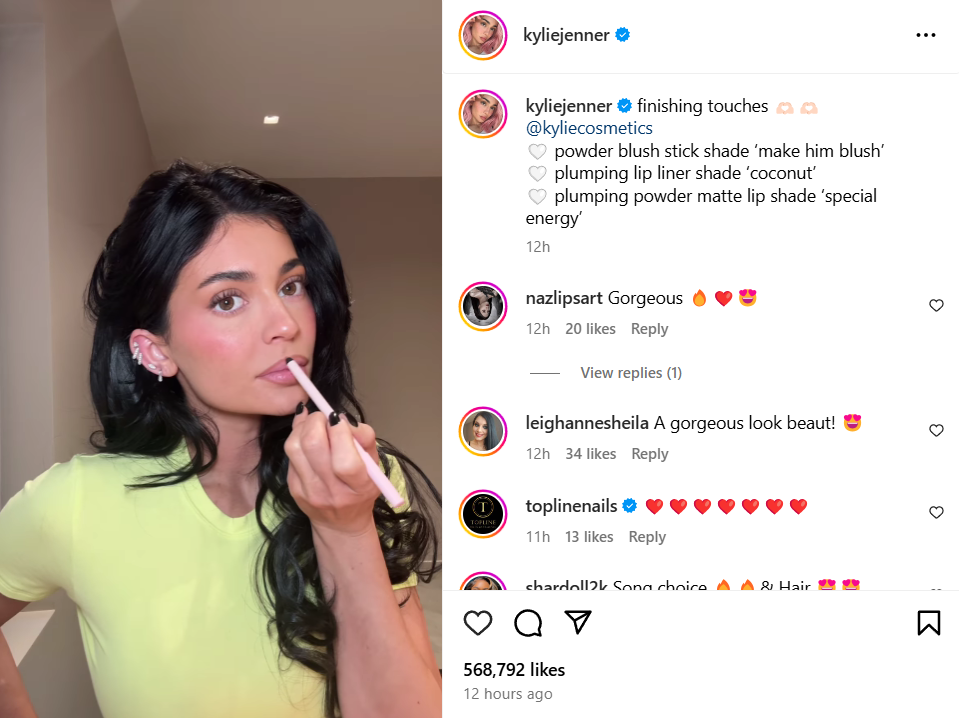
Spotlight on Mega Influencers Lineup
Moving ahead, we’ll lift the curtain on the heavy hitters of the influencer world.
- Kim Kardashian,appraised usual charge per entry – $2,176,000.
- Beyonce Knowles, appraised usual charge per entry- $1,889,000.
- Khloe Kardashian, appraised usual charge per entry- $1,866,000.
- Justin Bieber, appraised usual charge per entry- $1,763,000.
- Kendall Jenner, appraised usual charge per entry- $1,758,000.
- Nicki Minaj, appraised usual charge per entry – $1,344,000.
- Neymar da Silva, appraised usual charge per entry- $1,141,000.
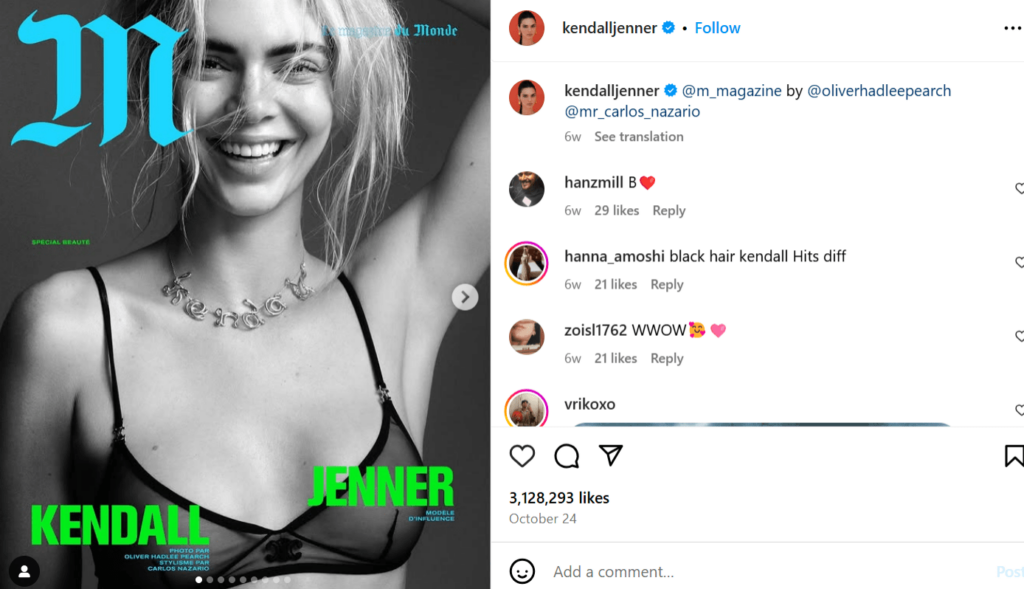
Approximate Ranges for Mega Influencer Pricing
Mega Influencers (>1M followers) usually charge between $2,000 and $50,000. Compared with other types of influencers, Mega Influencers charge the highest prices, mainly because of their wide fan coverage, high exposure, and high professionalism. They are suitable for large-scale brand awareness campaigns.
In addition, there are many factors that affect influencer prices, and the prices of different social media platforms are also different
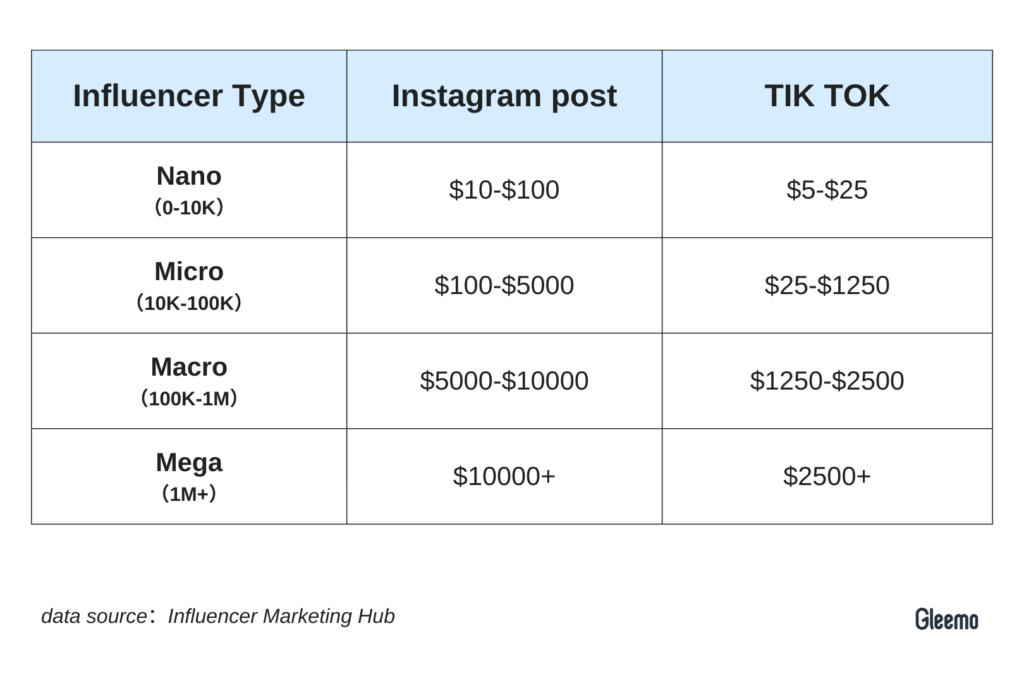
The Criteria for Mega Influencers to Screen Brands
Mega influencers take a rigorous approach when choosing partner brands to protect and strengthen their public image and personal brand.
The main factors they focus on in this process:
- Brand value fit
- Product quality and relevance
- Audience matching
- Reasonable financial terms
- Creative autonomy
- Historical performance and reputation
- Long-term cooperation potential
Notes for brands:
- Truly present the brand story, reflect the unique selling point and mission vision.
- Clearly demonstrate the quality assurance of the product.
- Design a win-win cooperation plan, including a transparent payment structure and respect for the creator’s creative rights.
- Show the brand’s good track record and market feedback.
Golden Strategy: The Art of Negotiating with Mega Influencers
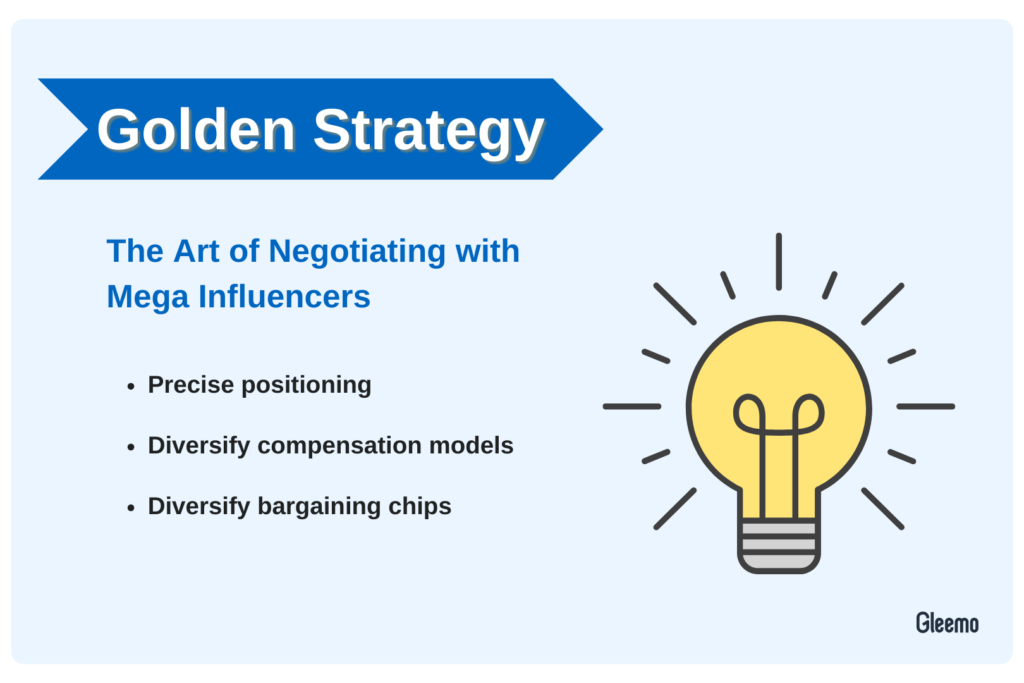
Mega Influencer’s offer is relatively high. When choosing to cooperate with it, brands need to comprehensively consider factors such as investment risk, brand matching, long-term cooperation, and content quality.
In addition, during the negotiation process, if brands want to reach an ideal cooperation as soon as possible, they need to pay attention to the following aspects:
Precise positioning
Clearly articulate the added value that a partnership can bring to their brand and personal image.
Diversify compensation models
In addition to a one-time payment, add revenue sharing options such as percentage of sales, pay-per-click (CPC), or traffic-generating (CPA) models to increase appeal.
Diversify bargaining chips
You can get more flexibility (and a better deal) by leveraging multiple angles in price negotiations. For example: if the fee is slightly higher than the budget, you can negotiate on completion deadlines, influencer ratings, audience demographics, etc.
Best Practices for Collaborating with Mega Influencers
- Daniel Wellington has collaborated with influential influencers such as Kylie Jenner, and his collaborative posts have garnered millions of likes.
- Best Fiends is a free mobile game. The company contacted Laura Clery, a Facebook influencer who had nearly 3 million followers at the time, to promote the game. The result was a huge success.
- SeatGeek recently partnered with YouTube star Cody Ko to create comedy and review videos. He currently has 4.08 million subscribers and counting, and each video receives millions of views.
The Art of Alliance: Navigate Partnerships with Macro Influencers
What is a Macro Influencer?
Macro Influencers (100,000 – 1M followers) are well-known within specific industries or niches, offering a balance between broad visibility and strong engagement.They are great for expanding a brand’s reach within targeted verticals while maintaining a relatively higher engagement rate compared to Mega influencers.
Spotlight on Macro Influencers Lineup
- Marie Joy Jurado
- Rabah
- Casey Neistat
- Neil Patel
- Kayla — rinnegoddess
- Arianna Huffington
- Olya Hill
- Michelle Phan

Approximate Ranges for Macro Influencer Pricing
Macro Influencers (100,000 – 1M followers), their quotes range from $500,000 to $1,000,000. The advantages of this type of influencer are effectiveness, wide coverage, and high professionalism. Although macro influencers are cheaper than super influencers, their security costs are still high.
It should be noted that these quotes are for reference only, and the actual quote may be affected by many factors, such as the influencer’s fan engagement, the form of cooperation, the content type (video, picture or text), and the market area.
The Criteria for Macro Influencers to Screen Brands
Macro Influencers (100,000 – 1M followers) consider multiple dimensions when selecting partners to ensure that the selected brands are highly consistent with their personal image, values and audience.
The main factors they focus on in this process:
- Brand relevance
- Target audience match
- Product or service quality
- Mutual benefit
- Contract flexibility
Notes for brands:
- Build sincere partnerships, gradually build trust and reputation through small-scale pilots.
- Improve product quality and services to ensure positive feedback from cooperation.
- Establish an open and respectful dialogue platform to demonstrate integrity and transparency
Golden Strategy: The Art of Negotiating with Macro Influencers
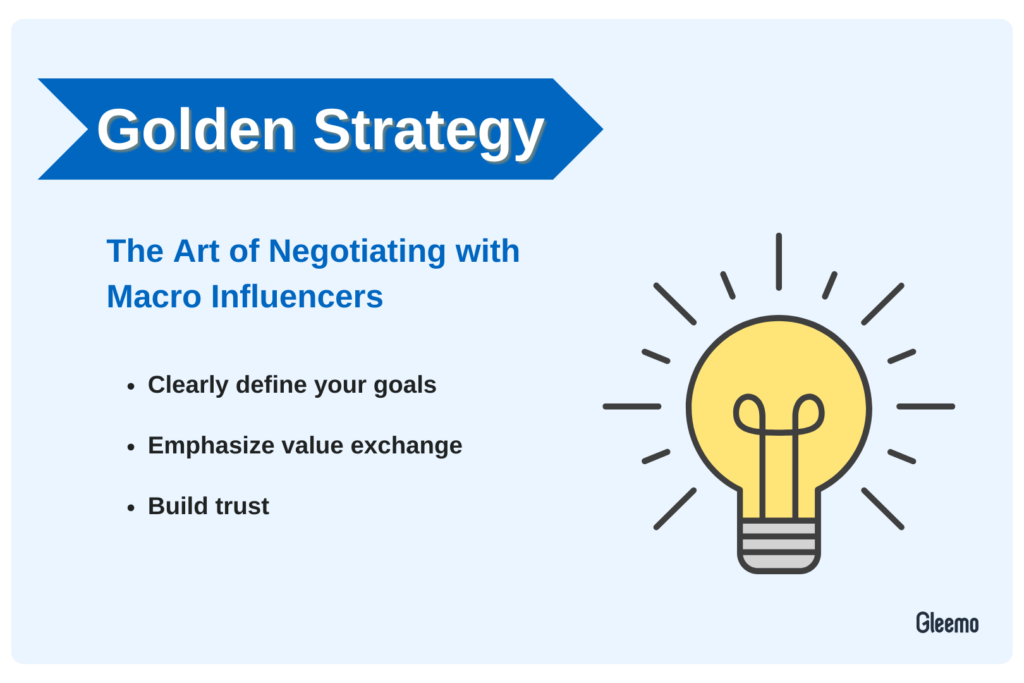
The price of Macro Influencer is between Mega & Micro, which is suitable for brands with a certain budget and who want to expand their brand influence. The following aspects should be paid attention to during the negotiation:
Clearly define your goals
Whether it’s brand exposure, sales growth, or market expansion. Clear goals help focus the discussion and avoid going off track.
Emphasize value exchange
Show how your proposal will benefit the other party, understand and respect the other party’s values, and find the intersection of win-win for both parties.
Build trust
Show your sincerity in cooperation and avoid using high-pressure tactics or hidden agendas.
Best Practices for Collaborating with Macro Influencers
- Dana is a fashion and lifestyle influencer with 863K TikTok followers. She has brand partnerships with well-known fashion retailers such as Steve Madden, Shein and Primark.
- Garance is a French author and skincare line entrepreneur. She has 681K Instagram followers. She gained attention by sharing her go-to clean skincare product, Dore.
Win-Win Scenarios: Key to Collaborating with Micro Influencers
What is a Micro Influencer?
Micro Influencers (10,000 – 100,000 followers)are often seen as experts or opinion leaders within their niche. Their smaller yet highly engaged audiences make them ideal for brands focused on conversions, community-building, and authentic interactions.
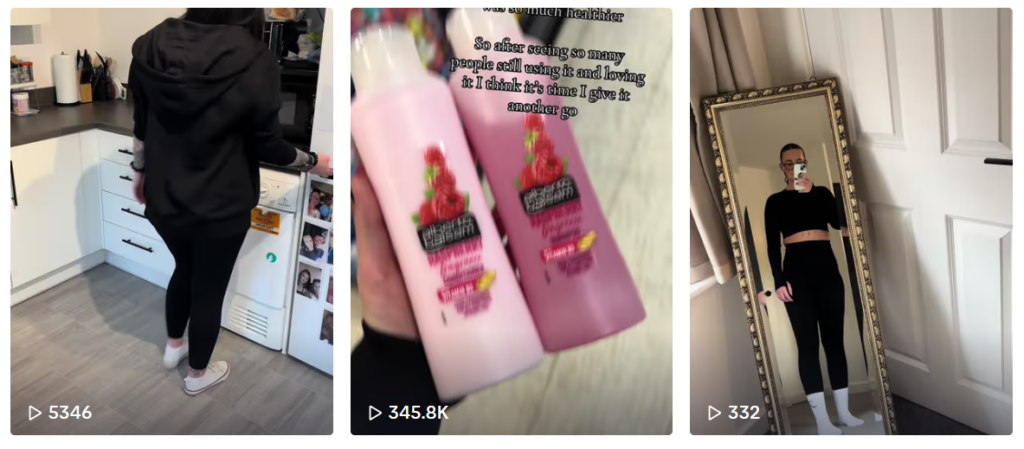
Spotlight on Micro Influencers Lineup
- thekittenjam
- mamaswahnsinn
- aa.beer.aa
- dranchuktatiana
- dude_lore
- mynameishannah_x
- penn_griffey6
- alinaaboyko
- mathvsl
- paperain
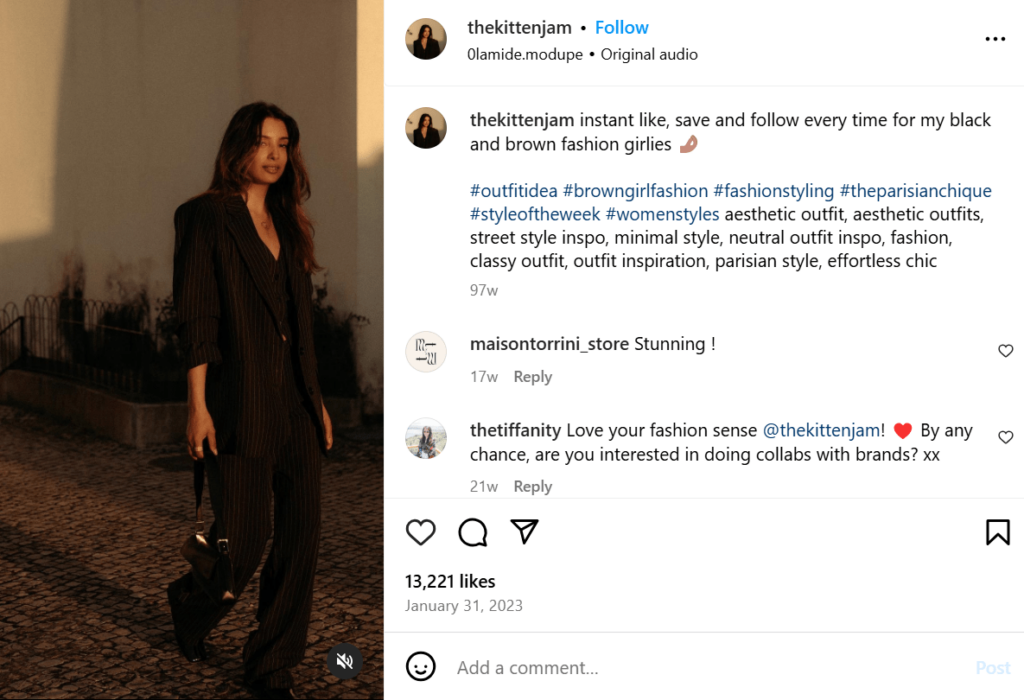
Approximate Ranges for Micro Influencer Pricing
Micro Influencer quotes are relatively low because they have less influence and coverage. They are suitable for brands that have a certain budget and want to promote their brands through high interaction rates.
Compared with other types of influencers, Micro Influencer quotes may be lower than Macro and Mega, but higher than Nano Influencer. When choosing a Micro Influencer, brands need to consider factors such as content credibility, cost-effectiveness, and fan engagement.
The Criteria for Micro Influencers to Screen Brands
When choosing a partner brand, micro influencers usually considers the following key points.
The main factors they focus on in this process:
- Creative autonomy
- Value and benefits
- Long-term relationship building
- Audience matching
- Product or service quality
Notes for brands:
- Ensure the quality of products or services and establish a good reputation.
- Respect the personality and creativity of creators and provide reasonable freedom.
- Design attractive cooperation conditions, such as customized reward plans
Golden Strategy: The Art of Negotiating with Micro Influencers
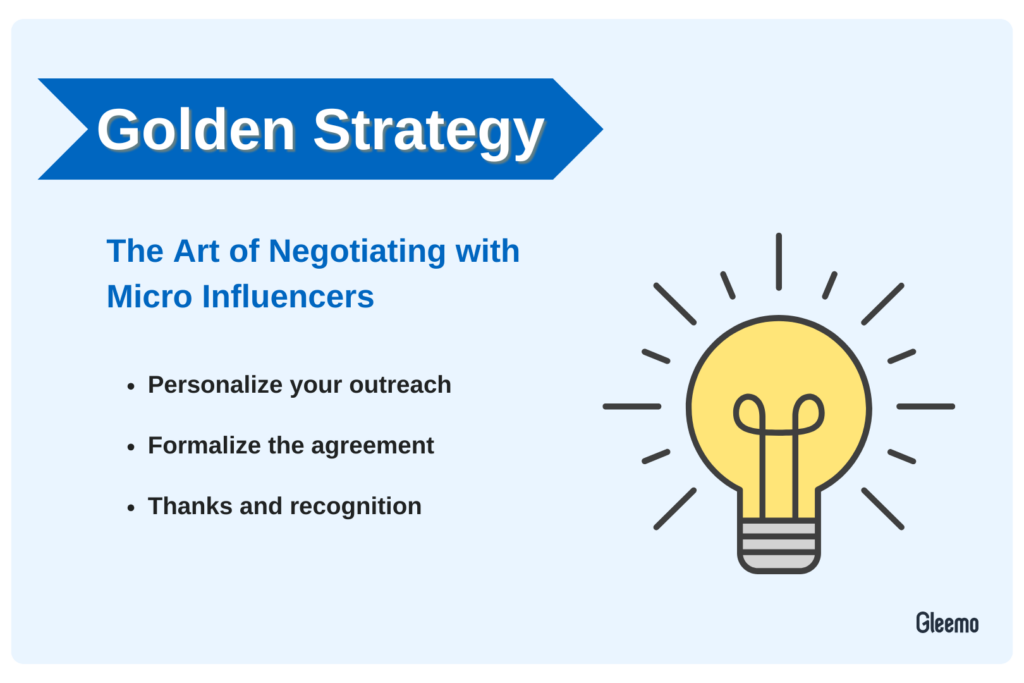
Personalize your outreach
Given that micro-influencers often have a stronger connection to their audience, your initial outreach should be personalized.
For example, you could mention one of their recent posts or a specific topic at the beginning of the email to show that you already follow and appreciate their work.
Formalize the agreement
Even for small collaborations, there should be a basic contract or memorandum of understanding that sets out the rights, responsibilities, and expectations of both parties.
Thanks and recognition
No matter how big or small the collaboration is, appropriate thanks and positive feedback should be given upon completion, which helps to build good word of mouth.
Best Practices for Collaborating with Micro Influencers
- Marissa is a bodybuilder and professional polo player. She has already collaborated with brands and is the perfect advocate for brands in the bodybuilding industry as well as brands targeting polo enthusiasts.
- Nikki Rodhi is an Instagram micro-influencer whose content is centered around lifestyle, fashion, beauty, and music. She has collaborated with some major brands like Lancôme, Palmer’s, and Rimmel London.
- Airbnb works with micro-influencers who are passionate about travel and unique experiences. The influencers’ personal travel stories and recommendations inspire potential customers to explore Airbnb’s services.
Master Collaboration: Effective Strategies for Working with Nano Influencers
What is a Nano Influencer?
Nano Influencers (1,000 – 10,000 followers) have extremely high engagement and personal trust with their followers, though their audiences are smaller. They are perfect for hyper-targeted, localized campaigns where authentic, community-driven marketing is key.
Spotlight on Nano Influencers Lineup
- Amanda: obsessed with skincare, coffee, & cats with 2733followers
- Rhyan Geiger: plant based nutrition expert + writer with 10K followers
- Jessica: Bio Geeky Crochet Designer with 9,416 followers
- Mark Henick: Bio bestselling author +mental health activist with 5431 followers
- Krupa: Chemistry tutor with 7587 followers
- Angel Montfort: Bio Psychologist with 6358 followers

Approximate Ranges for Nano Influencer Pricing
Compared with other types of influencers, nano influencers prices are relatively low because their influence and coverage are small. They are suitable for small brands or localized marketing.
When choosing a Nano Influencer, brands need to consider fan engagement, content credibility, cost-effectiveness, and localized marketing needs.
The Criteria for Nano Influencers to Screen Brands
The main factors they focus on in this process:
- Content relevance
- Brand values
- Quality of fan interaction
- Authenticity
- Flexible cooperation model
- Influence recognition
- Future development potential
Notes for brands:
- Respect and listen to the opinions of influencers and encourage creative freedom.
- Propose novel and interesting interactive concepts to increase the attractiveness of cooperation.
- Show the brand’s plans and vision for the future and indicate the long-term significance of cooperation.
Even if you do not completely dominate in some aspects, you can find the right Nano Influencer to achieve cooperation by strengthening brand characteristics and showing your personal charm.
Golden Strategy: The Art of Negotiating with Nano Influencers
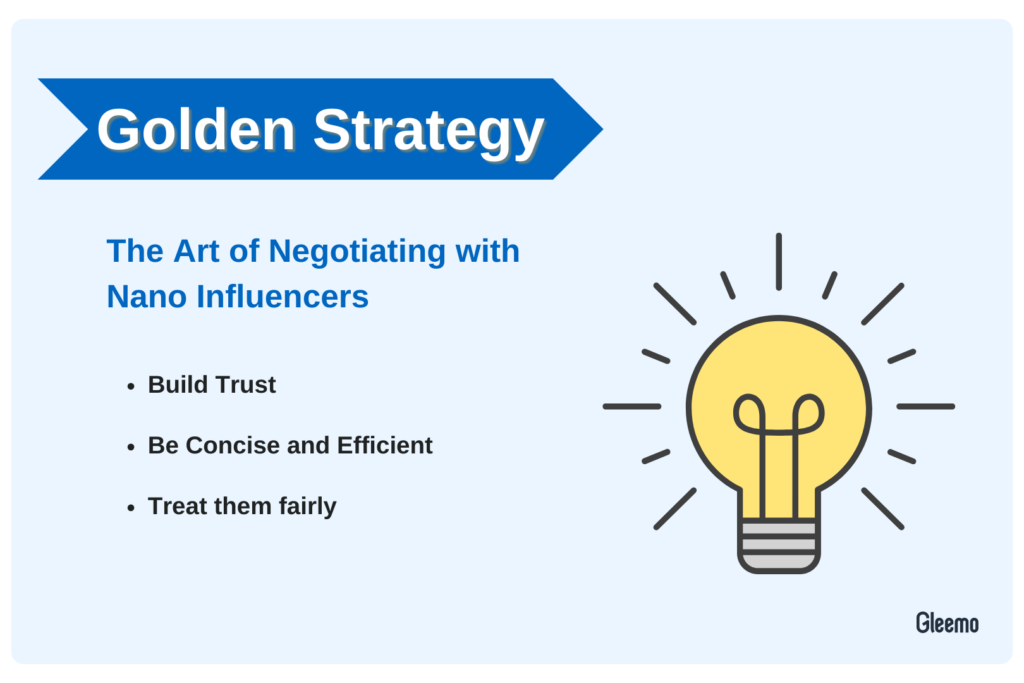
Build Trust
Nano Influencers have a deep sense of trust with their fans. In negotiations, emphasize how you respect this relationship and promise not to abuse their platform or community.
Be Concise and Efficient
Nano Influencers may not have a team to handle complicated matters, so the information should be concise and to the point.
Treat them fairly
Even if it is small, make sure the deal you offer is fair and reasonable, especially when it comes to compensation or resource exchange.
Best Practices for Collaborating with Nano Influencers
- Leshawn Bridgewater is a New York City-based wardrobe stylist, personal shopper, and designer. He has worked with Samsung and Kiehl’s and has been featured in Forbes and Vogue.
- @cookwithmeow and HelloFresh-Cook With Meow is a channel run by a cat-loving chef. HelloFresh partnered with it to launch a series of meals with cat-pattern packaging, which won praise from cooking enthusiasts and pet owners.
- @beautystreams and L’Oréal Paris-Sarah, the creator of BeautyStreams, is a Nano Influencer specializing in makeup and hair. While working with L’Oréal Paris, she brought a relatable and authentic voice to the brand’s new product campaigns through livestreams and behind-the-scenes footage.
How to Choose Right Influencers for Your Campaigns?
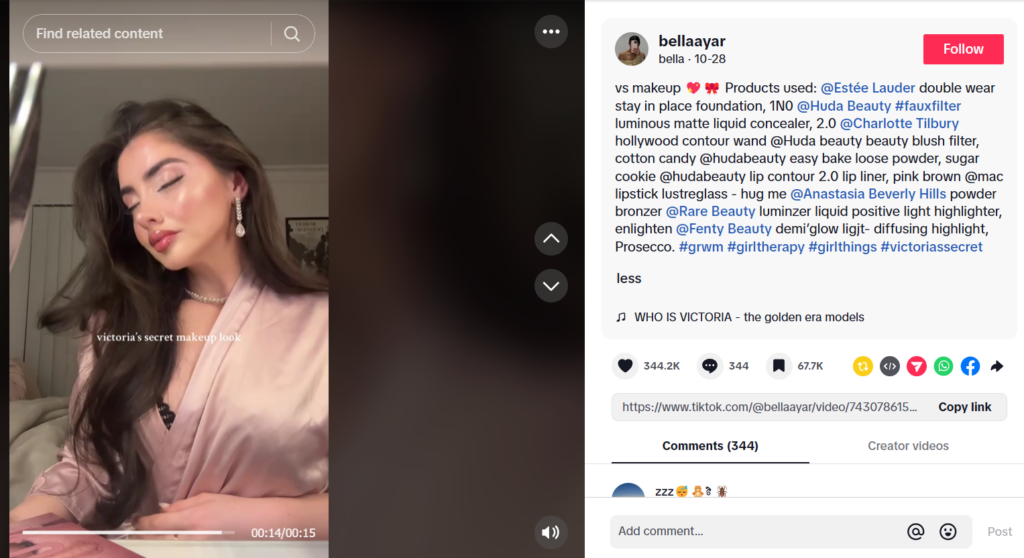
Selecting the right influencer is a crucial step in achieving your marketing goals. But faced with so many types of influencers, how can you make informed choices?
Define Your Marketing Goals
Your goals will determine which type of influencer is best for your campaign—brand awareness, engagement, lead generation, or direct sales.
Mega or macro influencers are best for campaigns that aim to reach a large audience, as they have widespread visibility.
Micro and nano influencers are best for campaigns focused on high engagement or brand loyalty, as they connect more closely with their audience.
Assess Audience Demographics
Different audience demographics have different campaign resonance and likelihood of conversion.
Calvin Klein leveraged influencers like Justin Bieber to appeal to a young, fashion-forward demographic, which led to a significant increase in social media followers and user-generated content.
Similarly, Daniel Wellington focused on micro-influencers to target a fashion-conscious demographic, which resulted in a significant increase in brand awareness and sales.
Consider Your Budget
A large follower count is a good expense, but it doesn’t guarantee high engagement. You should evaluate an influencer’s engagement by analyzing comments, likes, and shares on recent posts.
Mega& macro influencers charge more: suitable for companies with sufficient budgets.
Micro and nano influencers: higher engagement rates, authentic interactions and conversions are valuable.
Analyze Engagement Metrics
Engagement, likes comments, shares, and interactions, is critical to measuring the influencer’s connection with the audience. These metrics are often better predictors of ROI than follower count.
High engagement indicates a strong connection between the audience and the influencer, which is critical for effective marketing campaigns and ROI.
Brands like Daniel Wellington have found success by focusing on micro influencers who have fewer followers but high engagement and authenticity, which has led to increased sales and brand awareness.
FAQS
1. How to measure the return on investment (ROI) of these influencers?
The effectiveness of macro-influencer collaborations can be quantified by tracking dedicated link clicks, coupon code usage, social media analytics tools, and brand awareness surveys. The key is to set clear KPIs and monitor results continuously.
2. Why are nano-influencers so important?
Despite having fewer followers, nano-influencers have extremely high authority and engagement within a specific niche, which is very beneficial for brands that want to reach specific audiences in a refined manner.
3. What are the risks involved in influencer collaborations at all levels?
One of the biggest risks is damage to brand reputation. If the influencer’s behavior or speech is inconsistent with the brand image, it may lead to negative public opinion.
4. How to deal with controversy or negative feedback?
Develop a crisis management plan, prepare response strategies in advance, respond to public concerns in a timely manner, and publicly apologize or clarify the facts when necessary to protect brand credibility.
Wrapping up
Influencer marketing emerges as a luminary strategy for brands aspiring to captivate expansive, ardently attentive communities.Among the four cardinal categories of influencers—from nano to mega—the quintessence lies in apprehending the distinct merits and limitations inherent to each, thus discerning the most congruent alliance for your unique persona.
With the right tools like Gleemo to do influencer analytics, you can efficiently discover and connect with the ideal influencers—whether Mega, Macro, Micro, or Nano—helping to elevate your e-commerce sales and strengthen brand loyalty.


